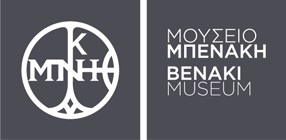Δεν παρατίθεται περίληψη στα ελληνικά.
(EL)
Towards the end of the nineteenth century the goldsmiths Serapheim P. Seferiades and Antonios I. Karamihalis joined forces and established a workshop in Smyrna for gold- and silversmithing. In 1922 they fled to Athens, where they continued their trade. The Athens workshop was active up to 1940. In 2002 Serapheim’s sons, Evripidis and Kyriakos Seferiades donated all the tools and other workshop items to the Benaki Museum, along with photographs and the certificates brought back from international exhibitions at which the workshop had showed.At present the Benaki Museum has no other gold- or silver-working tools in its collection. However, the number and the range of tools from the Seferiades workshop enables us to see the developments in their design and form over the years, the differences between hand-made and factory-made tools and to give a full picture of a gold- and silversmith’s workshop in the first half of the twentieth century.There are 1,420 objects from the Seferiades workshop altogether. Of these 964 are gold- or silver-working tools, 7 tools for other trades and 69 general-purpose tools which can be used for many trades. The remaining 380 objects are not tools. Among them are three hand-operated machines (three crank-operated rolling mills for making wire and two cylindrical rolls for producing wire and sheet metal, one electric polisher and two furnaces).Of these some are in excellent condition and could be used at any minute, others need cleaning or some further action to preserve them.For the most part the tools are made of iron, wood or a mixture of these materials. Bronze and steel are also used and there are even some rare or ‘odd’ materials. They vary a good deal in size, ranging from a few metres to just a few centimetres. Yet in every case they were designed and constructed with a view to aiding the human hand. Their dimensions also depend on the size of the end product. For silverware it is often necessary to use the same tools as for jewellery, but on a larger scale.The tools are all products of the twentieth century. Only two or three raise questions on account of their elaborate decoration. Perhaps they were bought second hand or were saved when the workshop decamped. They may even have been crafted with special care by the artisans themselves, modifying older pieces.The workshop’s main activity was the production of small and large objects in gold and silver and the recycling of these metals. They produced products for religious and secular use. The best known are the iconostasis in the Athens Polyclinic (1938), the flabella, or liturgical fans, for the University church in Athens, the Byzantine Panayia Kapnikarea, ‘Smyrniot’ gold bangles as well as a binding for a Holy Bible in the Church of the Dormition of the Virgin in Vitsa, in the Zagori (1912) and a gold ‘crown’ for Leonidas Paraskevopoulos, Commander in Chief of Greek forces in Smyrna (1920).They also produced items for ecclesiastical and domestic use, such as jewellery for personal decoration. This can be concluded from looking at the moulds, which were found among the tools and which had been used to make tamata(votive offerings in the form of metal plaques), bindings for religious books, patens, revetments for icons, jewellery, frames and spoons. The objects from the workshop have been photographed, measured, recorded, catalogued and stored digitally. An attempt has been made to describe all those aspects of the goldsmith’s work in which they played a part, in order to ascertain the function of each tool, to investigate and give all their names, so that the presentation is not confined to a simple record and description of them.Though they have not yet been exhibited to the public, it is to be hoped that some sort of display can be organized. In addition to members of the trade, who have a special interest in these tools, it would allow the rest of us, and in particular young people, to come into contact, albeit in imagination, with another world, quite unlike the modern world which is tending to do away with the culture of excellence.
(EN)

